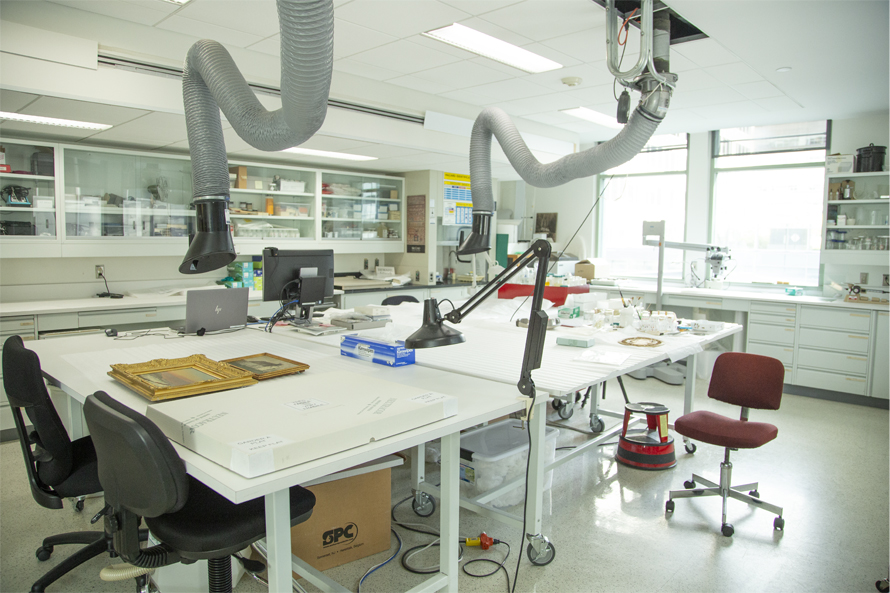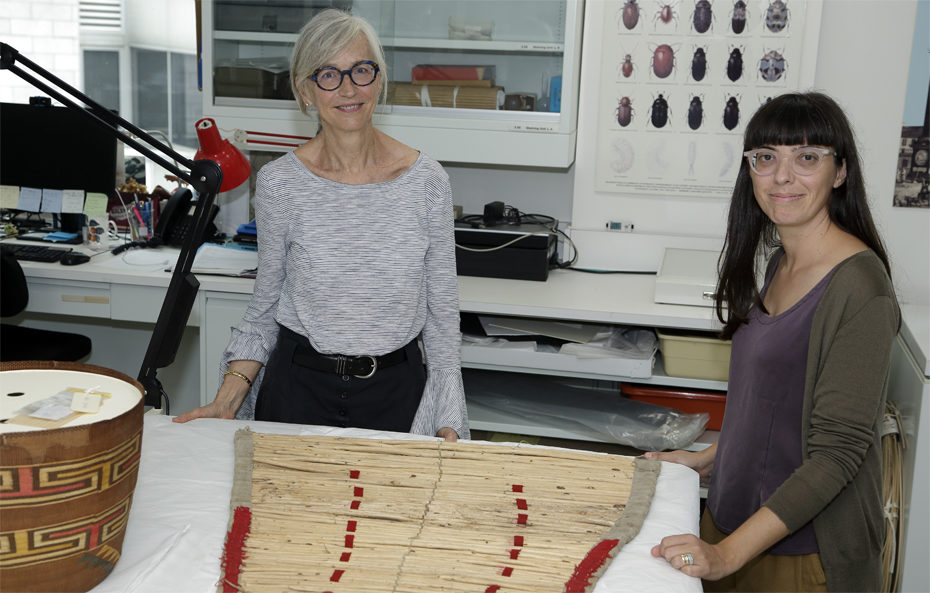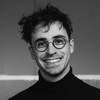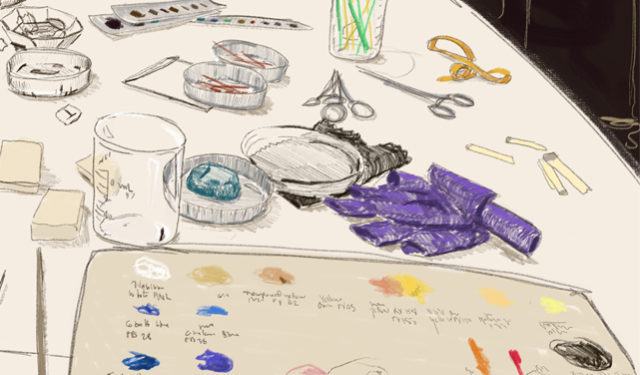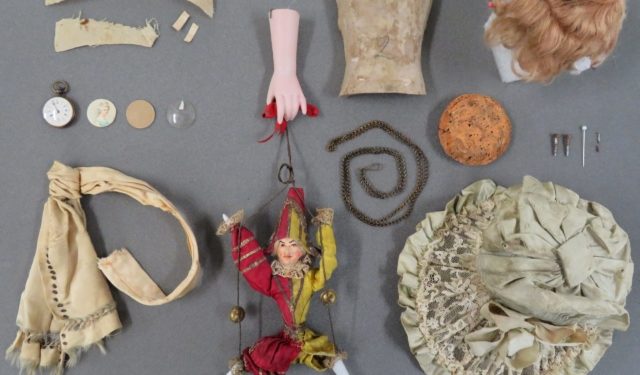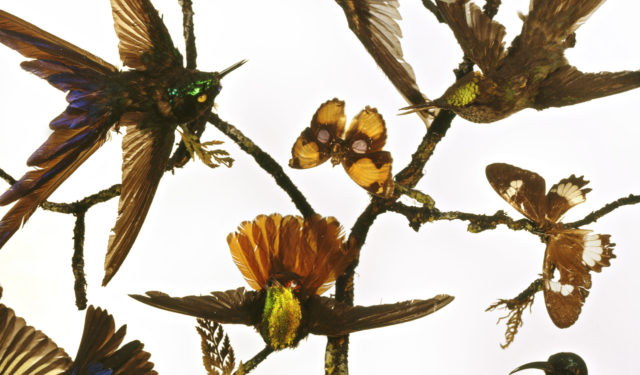The Evolving World of Conservation: A Long Career and a New Beginning
A conversation between Anne MacKay and Caterina Florio, who reflect on the past, present and future of their common passion: conservation.
September 28, 2021
Anne MacKay and Caterina Florio sit in Anne’s office, located in one of the McCord Museum’s conservation labs. After more than 20 years as Head of Conservation, the former is stepping down to focus on other projects; the latter is her successor. I have placed my recording device in front of them and taken a seat a bit further back. Though the interview has not even begun, I can already sense the affinity between the two conservators. Excitement and high spirits are palpable as the room lights up with the early afternoon sun.
Anne: My name is Anne MacKay; I’ve been Head of Conservation at the McCord Museum since 1997. I work with a team of five people and we are responsible for the physical care, treatment and research of all the objects in the collections.
Caterina: I’m Caterina Florio; I have been at the McCord Museum for four days! Prior to that, I was the textile conservator at the Canadian Museum of History in Gatineau. Before that, I had my own textile conservation practice in Toronto.
What were your ambitions when you started at the Museum and how did they evolve?
Anne: That’s an interesting question because I think that my ambitions have evolved over time. However, I did develop a very specific goal at the Museum, which was to bring conservation out of the wings to make it more front and centre.
Obviously, institutions create divisions to define people’s work, but I find sometimes that conservation is almost “over” defined as a technical, technological, or scientific activity that happens behind the scenes. Of course, one must have a certain technical ability and scientific training, but conservators tend to have a much broader knowledge of their field and have developed a wider expertise because of previous education or previous training. So that’s been my goal, to make conservation more front and centre in all the Museum’s processes and to give conservators the kind of freedom to explore their field in ways that go beyond how we traditionally see conservation.
Do you think that you succeeded?
Anne: I think that I have succeeded and I think that I have been allowed to succeed. These processes are very slow because the Museum itself is evolving—it’s a very different place from what it was when I started. The Museum is now much more aware of its social responsibilities. Conservation, traditionally seen as a very narrow field of practice, has also opened up in response to recent social changes and our current political and social realities. I welcome that 100%. We are moving more and more out of the backstage and participating more and more in broader issues at the Museum.
Caterina, what are your ambitions and biggest challenges, as the McCord Museum’s new Head of Conservation?
Caterina: Firstly, let’s note that I have huge shoes to fill. Anne is very well known in the field for the work she has been doing here at the McCord Museum. I, myself, know the field quite well after many years, but this position offers a somewhat different perspective on conservation.
I share with Anne the strong belief that conservation offers great possibilities for connections, especially in times like ours, when the social issues are wide and challenging. I think that conservation can contribute a creative and perhaps different perspective to the dialogue surrounding social issues. With our expertise on the materiality of objects, we can create bridges that expand beyond the walls of the lab.
When I was at the Canadian Museum of History, I used my role to create relationships within the institution itself, with the artifacts’ communities of origin and with colleagues outside the museum; this was one of the most interesting aspects of my work. Subjects can sometimes be uncomfortable and difficult, but conservation can help lead to productive communication.
Taking on this position at the McCord Museum, I hope that I can continue to facilitate that. We will see if I succeed!
Anne, what are your future plans?
Anne: Lots and lots of things! What excites me most is being able to work, in a more concentrated way, on research projects that I started while at the Museum, some of which have I have been working on for decades. Sometimes you get very busy, and you just have to let something drop for six months and then get back to it. So, there are a number of projects that I have started and haven’t been able to finish, such as a study of printed European cottons used in the fabrication of Indigenous objects and an analysis of the language used in conservation. The Museum very kindly agreed that it would be a good thing if I could pursue the research that I’ve been doing, and gave me the resources I need in order to continue.
Caterina, you worked in Toronto and Gatineau, so, are you new to Montreal?
Caterina: Yes, I am completely new to the city! I’m excited about many things, not just my new job, but also a new city. And I’m looking forward to getting to know it better. So far, it feels like a very diverse city, with many languages and many diverse people. It’s very energizing! Since I am an immigrant myself, I also think I fit right in.
How did the profession evolve during the decades you worked as Head of Conservation?
Anne: For me, the most pressing challenge is the care of our collections in a context where the demands on them are ever increasing. A prime concern is that the public have access to the collections. Museum exhibitions and loans are important ways to connect with the public. The challenge is to balance access to the collections with their preservation. Basically, we need to acquire objects for our collections in a way that recognizes the importance of their care, and we need to review the size of our collections in terms of our storage space and the capacity of our personnel. We don’t want to be gatekeepers, we don’t want to limit access, but on the other hand, we want to do it in a way that makes sense for us as an institution with a long-term responsibility for the objects in its collection.
Caterina: I don’t know if I have much to add to Anne’s comment. Society changes and the use of the collections within museums changes with it. So, I believe what Anne said reflects that.
Anne: We are so connected to the digital world that being able to come to a museum and see the real thing is becoming more and more meaningful for a lot of people. You can go online and see images of all kinds of things, but to visit a museum and see the object itself, see it contextualized within an exhibition and understand it a bit more is a very significant activity for people.
What is your favourite part of conservation?
Caterina: There is one fundamental thing that I love about conservation: it requires both intellectual curiosity and working with your hands. After so many years, I still find it interesting and new all the time. Best job ever!
Do you have anything that you want to add?
Anne: When I got into conservation, I could never have imagined where it would lead me—to the place where I am now. Now that I am retiring and looking back at what that road has been like, I can say that there have been many unexpected turns. I have realized that what you take on at the beginning, and where you go with it, is a very individual thing. I am so thankful for what this field has given me. It’s taken me to a place I couldn’t have imagined at the start.
Caterina: Listening to Anne is energizing and stimulating. I feel privileged that we have had this overlap, so I can absorb as much as I can.


